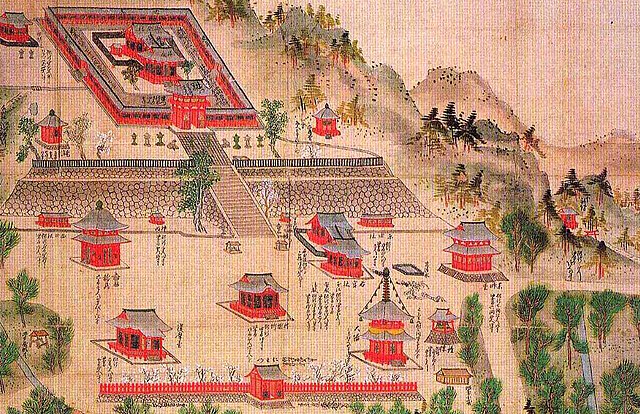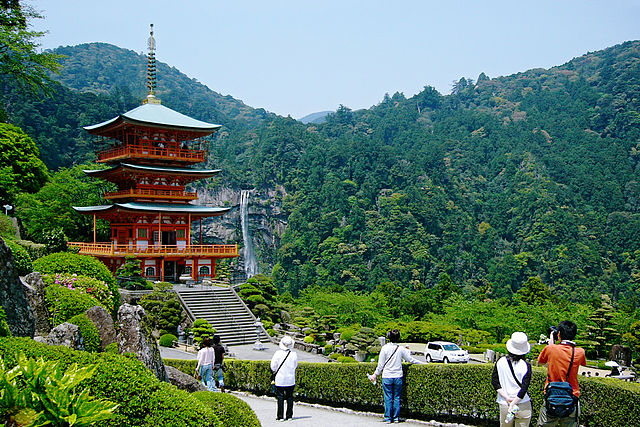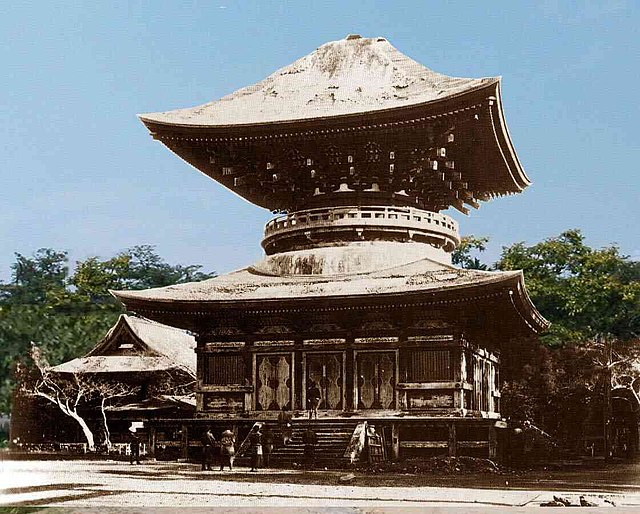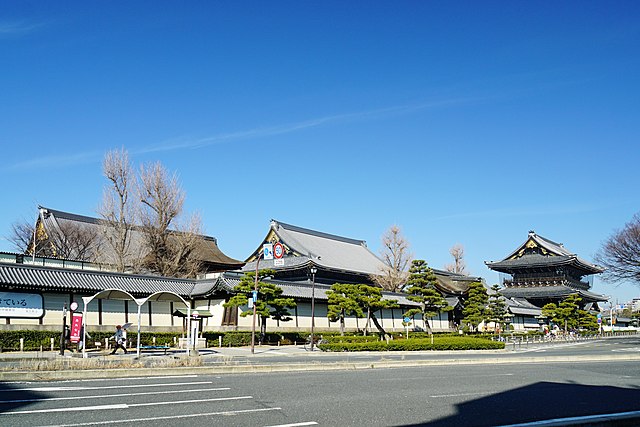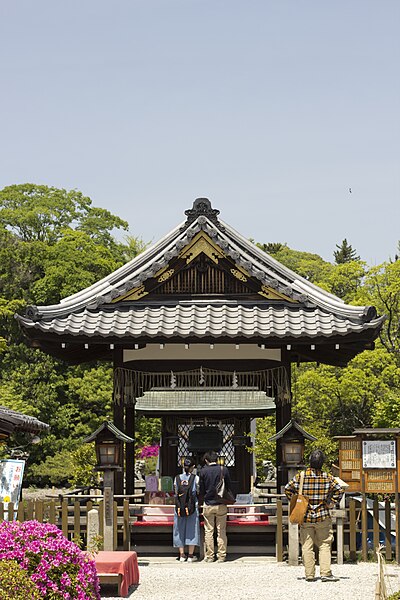Until the Meiji period (1868–1912), the jingū-ji were places of worship composed of a Buddhist temple and a Shinto shrine, both dedicated to a local kami. These complexes were born when a temple was erected next to a shrine to help its kami with its karmic problems. At the time, kami were thought to be also subjected to karma, and therefore in need of a salvation only Buddhism could provide. Having first appeared during the Nara period (710–794), jingū-ji remained common for over a millennium until, with few exceptions, they were destroyed in compliance with the Kami and Buddhas Separation Act of 1868. Seiganto-ji is a Tendai temple part of the Kumano Sanzan Shinto shrine complex, and as such can be considered one of the few shrine-temples still extant.
Tsurugaoka Hachimangū-ji in an old drawing. In the foreground the shrine-temple's Buddhist structures (not extant), among them a pagoda, a belltower and a niōmon. The shrine (extant) is above.
Seiganto-ji is one of the very few existing jingū-ji.
A Buddhist pagoda (a Yakushi-dō (薬師堂) at Tsurugaoka Hachimangū-ji in Kamakura before the shinbutsu bunri
Buddhist temples in Japan
Buddhist temples or monasteries are the most numerous, famous, and important religious buildings in Japan. The shogunates or leaders of Japan have made it a priority to update and rebuild Buddhist temples since the Momoyama period. The Japanese word for a Buddhist monastery is tera (寺), and the same kanji also has the pronunciation ji, so temple names frequently end in -dera or -ji. Another ending, -in (院), is normally used to refer to minor temples. Examples of temple names that have these suffixes are Kiyomizu-dera, Enryaku-ji and Kōtoku-in.
Higashi Hongan-ji in Kyoto
A torii at the entrance of Shitennō-ji, a Buddhist temple in Osaka
Honden of the Zennyo Ryūō shrine, inside a Shingon temple in Kyoto
A Buddhist-style gate (karamon) at Iwashimizu Hachiman-gū

